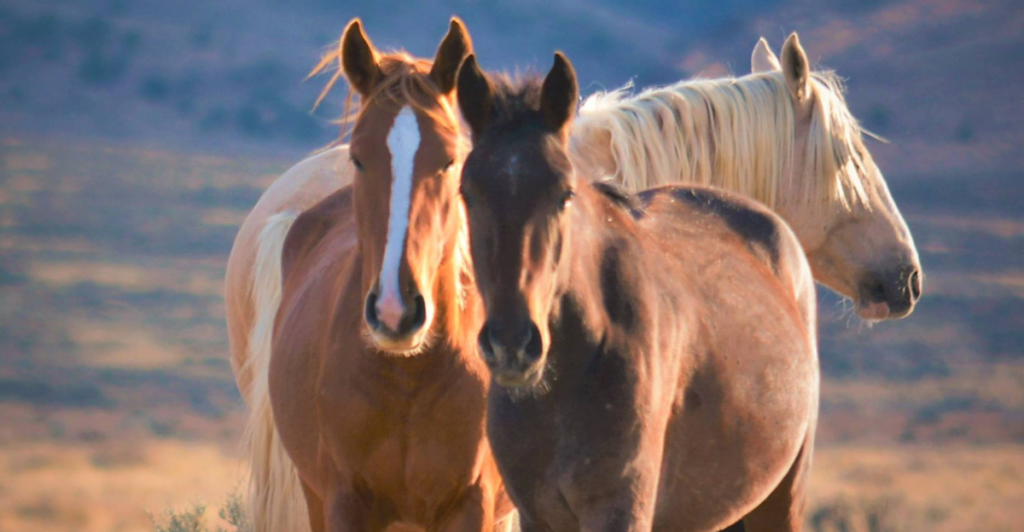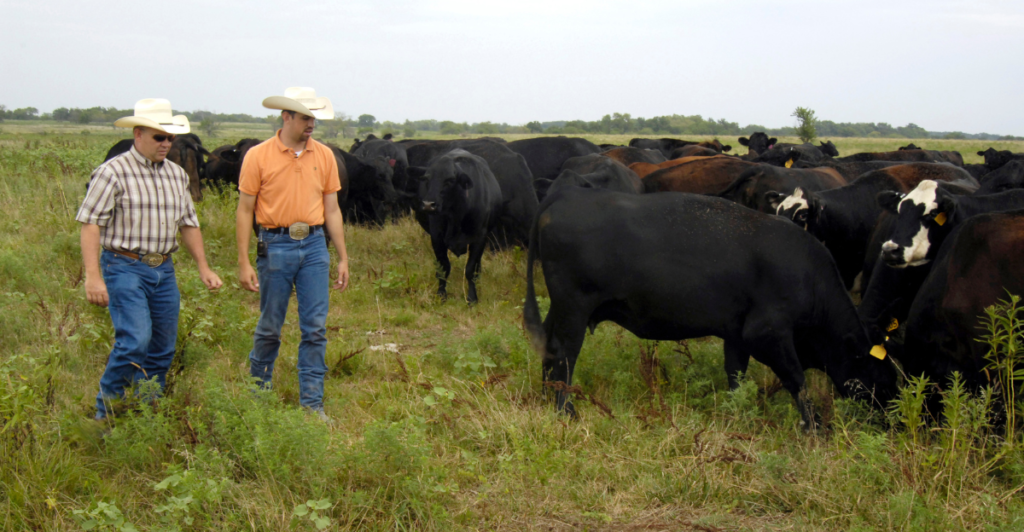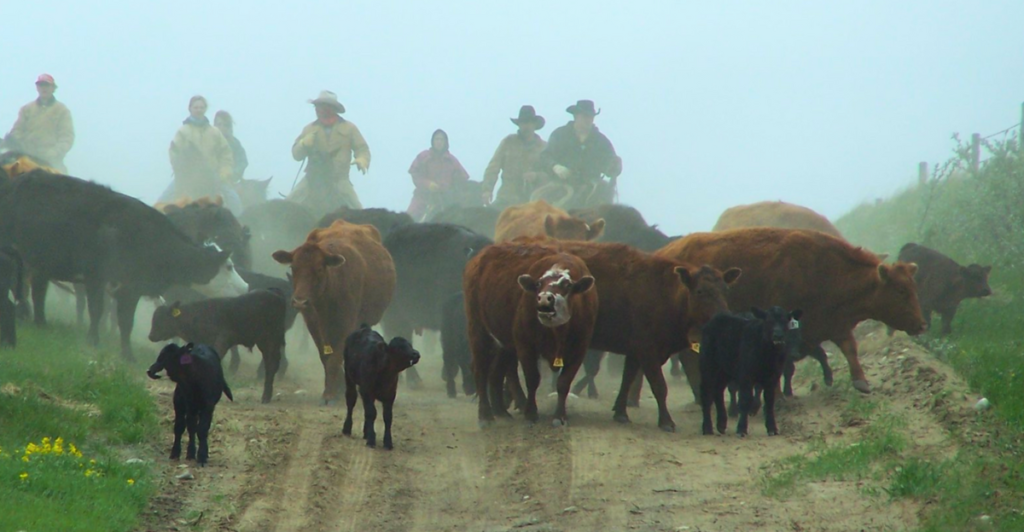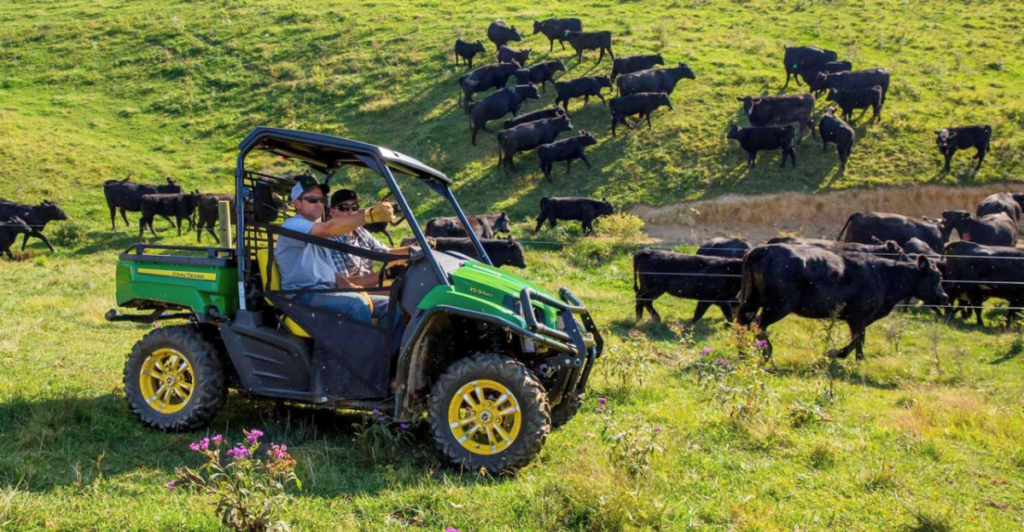
In the sprawling deserts and windswept plains of the American West, a conflict is brewing between cattle ranchers and wild mustangs. Both symbolize freedom and the frontier spirit—images deeply embedded in the American identity. However, the shared land they inhabit has become a contested battleground as grazing rights, ecological preservation, and economic interests collide. With government agencies caught in the middle, the debate continues to ignite tensions across the region.
The Wild Mustang: A Symbol of the West

Wild mustangs, descendants of horses brought to the Americas by Spanish explorers, roam free on public lands across the western states. For many, these animals embody untamed beauty and American resilience. However, their rising populations have presented challenges. The Bureau of Land Management (BLM), which oversees public rangelands, estimates there are over 80,000 wild mustangs—a number far exceeding what the land can sustainably support.
“The mustangs are part of our cultural heritage,” says Janet Price, a wildlife activist in Nevada. “But without proper management, we risk ecological destruction.”
The Ranchers’ Perspective: Strained Resources

On the other side of the debate are cattle ranchers, who depend on these same public lands for grazing. Generations of ranchers have raised cattle here, maintaining traditions that date back to the 19th century. Yet ranchers argue that wild mustangs consume grass and water resources intended for their livestock, placing economic strain on their operations.
In Our Blood

“Cattle are our livelihood,” says Mike Callahan, a third-generation rancher from Wyoming. “We pay for permits to graze our herds, but the mustangs are eating us out of house and home. It’s not sustainable.”
Callahan, like many ranchers, blames the federal government for what he calls “mismanagement” of the mustang population. The BLM, tasked with protecting both the horses and the land, walks a fine line between preservation and practicality.
Government Intervention: Rounding Up the Herds

To address the growing tensions, the BLM routinely conducts roundups of wild mustangs, using helicopters and wranglers to capture thousands of horses each year. These mustangs are then sent to holding facilities or adopted out to private owners. The roundups, however, have sparked outrage among animal rights groups.
“These horses are chased for miles, often injured or separated from their families,” says Lisa Monroe, director of Wild Horse Advocacy Now (WHAN). “The roundups are traumatic and inhumane.”
Yet, the BLM defends its actions as necessary for balancing horse populations and conserving the rangelands. “We have to manage the numbers to prevent overgrazing,” explains BLM spokesperson Carl Rodgers. “The land simply cannot support unchecked growth.”
Economic Stakes: The Cost of Compromise

While ranchers pay fees to graze cattle on public land, wild mustangs roam without restrictions. Critics argue this gives the mustangs an unfair advantage. Ranchers contend that the economic burden of shrinking grazing space threatens their way of life.
“The ranching industry supports thousands of jobs and rural economies,” says Callahan. “If we lose grazing lands, small towns across the West will suffer.”
Conversely, mustang advocates point out the government spends tens of millions of dollars annually to house captured horses in holding facilities. “It’s an expensive, endless cycle,” says Monroe. “There are better solutions.”
Environmental Concerns: Overgrazing and Scarcity

Both cattle and mustangs contribute to overgrazing when their numbers surpass the land’s capacity. Environmental scientists stress that the issue isn’t the horses or the cattle alone, but rather the lack of balance. Overgrazing leads to soil erosion, depletion of native grasses, and reduced water resources—effects exacerbated by droughts and climate change.
“Healthy ecosystems depend on sustainable management,” says Dr. Elaine Garrison, an ecologist specializing in rangeland health. “It’s not about choosing between cows and mustangs; it’s about finding a balance.”
She adds that overgrazing, regardless of species, can have long-term consequences for both wildlife and livestock. “If the land is destroyed, everyone loses.”
Cultural Divide: Tradition vs. Preservation

The cultural symbolism of wild mustangs adds an emotional layer to the debate. While ranchers view cattle ranching as a cornerstone of Western heritage, mustang advocates see the horses as living relics of history.
“This isn’t just about grass and water,” says Monroe. “It’s about protecting an iconic species that helped build the West.”
Ranchers, however, feel demonized in the discussion. “We’re painted as the bad guys, but we care about the land, too,” Callahan says. “Our families have been here for generations. We’re not against the horses, but we need fair solutions.”
Adoption Programs: A Potential Middle Ground?

One proposed solution involves expanding adoption programs for wild mustangs. The BLM offers financial incentives for individuals willing to adopt and care for the horses, but the program has had mixed results. Some adopters lack the resources to care for the animals, leading to cases of neglect or abandonment.
“It’s a good idea in theory,” says Rodgers, the BLM spokesperson. “But it requires better oversight and education.”
Organizations like WHAN advocate for sanctuaries and fertility control as humane alternatives to roundups and overcrowded holding facilities. “If we invest in long-term solutions now, we can save money and preserve the land,” Monroe argues.
Voices from the Land: The Human Impact

For those who live and work on the rangelands, the conflict is deeply personal. Ranchers worry about their livelihoods; activists fight to protect the mustangs; and government officials face increasing pressure from all sides.
“This land is home to us all,” says Carla Ramirez, a rancher and horse lover from Utah. “We need to find a way to coexist—cattle, mustangs, and people alike.”
Ramirez believes dialogue between ranchers, advocates, and policymakers is key to resolving the conflict. “If we can sit down and listen to each other, maybe we’ll find common ground.”
The Larger Picture: Public Lands Under Pressure

The debate over mustangs and cattle is part of a broader issue facing the American West: the competing demands on public lands. In addition to livestock and wild horses, these areas are home to recreational activities, energy development, and diverse wildlife. As the population grows and climate conditions worsen, the strain on resources will only intensify.
“Public lands belong to everyone,” says Dr. Garrison. “But their future depends on careful, cooperative management.”
Looking Forward: A Need for Collaboration

Despite the heated rhetoric, there is hope for compromise. Stakeholders on both sides agree that something must change to preserve the rangelands and the livelihoods they support. Increased use of fertility control, improved adoption programs, and collaborative management efforts could pave the way for progress.
“We’re at a turning point,” says Monroe. “If we don’t act now, we risk losing both the mustangs and the ranching way of life.”
Ranchers like Callahan echo the call for solutions. “We’re not asking for the horses to disappear. We’re asking for balance—so everyone has a future.”
An Ongoing Struggle for the West

The clash between cattle ranchers and wild mustangs reflects a broader struggle to balance tradition, ecology, and economics in the American West. The iconic landscapes, once vast and untamed, are now a shared space where competing interests must coexist. As ranchers, advocates, and policymakers search for solutions, the spirit of the West endures—a reminder of both its beauty and its challenges.
In the words of Carla Ramirez, “The West is big enough for all of us if we can just learn to share it.”
Stay connected with us for more stories like this! Follow us to get the latest updates or hit the Follow button at the top of this article, and let us know what you think by leaving your feedback below. We’d love to hear from you!







